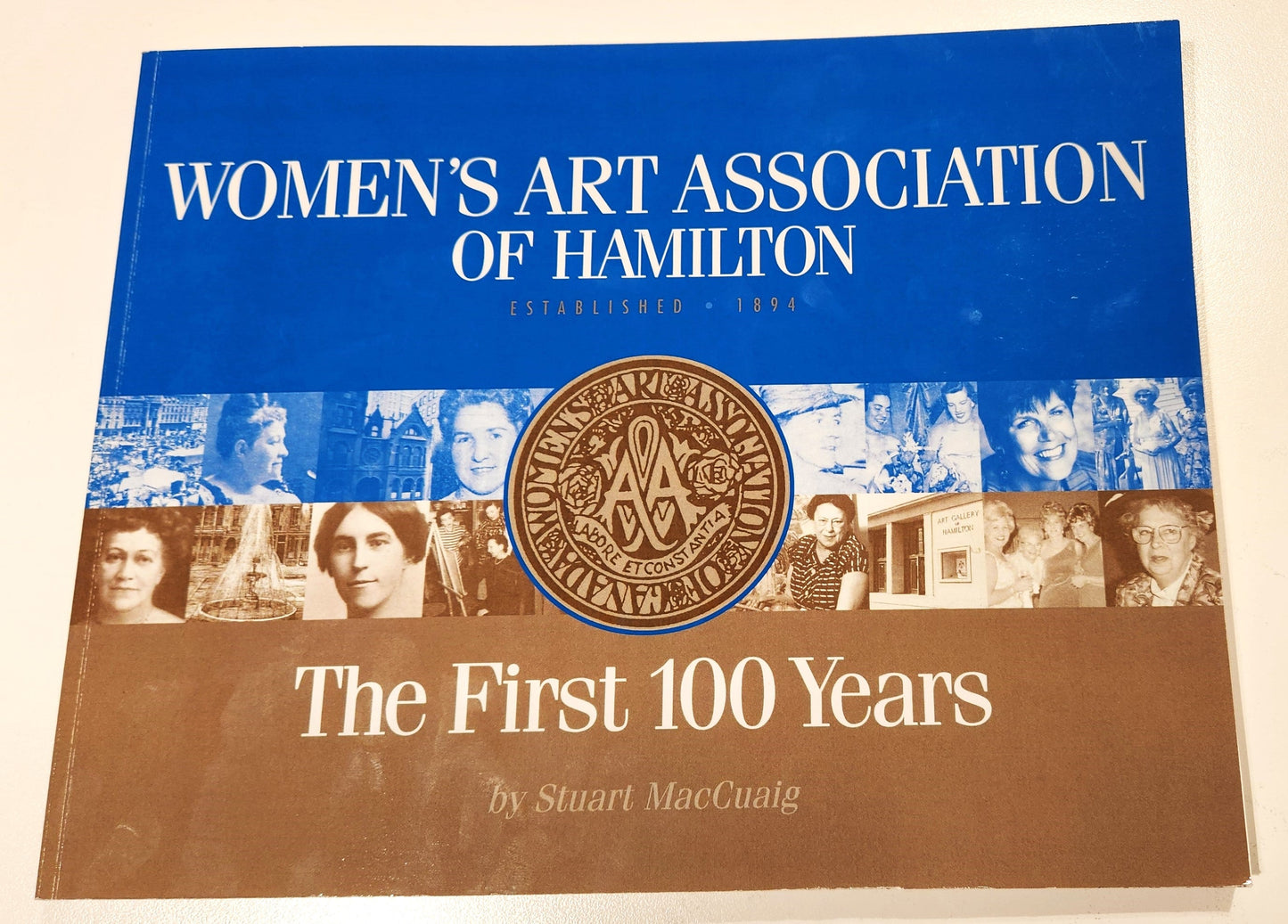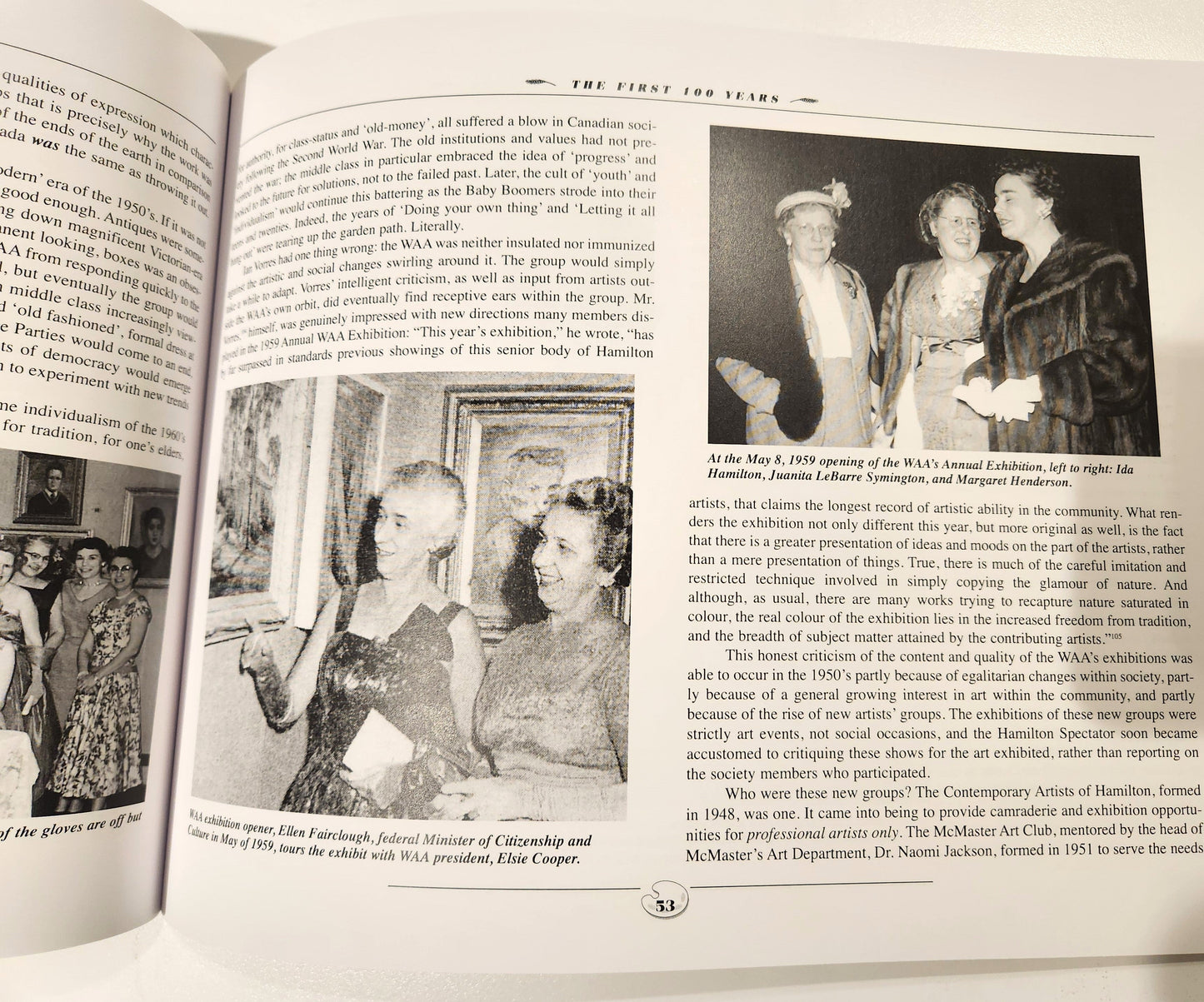“The WAA was (and is) a grassroots organization, open to artists, whether amateurs or professionals, and to non-artists. What unites all the members is a desire to learn more about art and a determination to spread the gospel of art throughout the community. No other group’s mission included educating the public on artistic matters to the degree the WAA’s did, and therein lies one of the secrets to the WAA’s longevity” (MacCuaig, 6).
Women's Art Hamilton Book
Women's Art Hamilton Book
Couldn't load pickup availability
The Art Gallery of Hamilton, Dundas Valley School of Arts, Hamilton Artists Inc., the James Street Art Crawl – all staples of the thriving contemporary arts scene in Hamilton. Each of these institutions began due to community organization and drive. Not because of government initiatives or corporate sponsorships, but because of the efforts of committed residents. Hamilton as a cultural hub has been built by its community, and especially, by its women.
Long before these powerhouse organizations reached their current status, the Women’s Art Association of Hamilton (WAA) was hard at work to lay foundations. While the city began to accelerate in the late 1800s, a group of community-minded women saw that industry was the main concern, while the arts were given little attention by the governing bodies of men. The emphasis on Hamilton’s intense industrialization overwhelmed any room for cultural growth, but it did give way to the establishment of the Hamilton Art School in 1886 out of a need for industrial and commercial artists. This boom also lead to a freshly rich upper class, leaving room for women with servants to pursue interests outside the home. As Stuart MacCuaig writes:
“The proper Victorian woman, whose ‘place’ was unquestionably in the home, “might crochet the mat for a lamp to stand on but she may not clean the lamp”; her activity, from a modern viewpoint, might be described as ‘craft therapy for the severely underemployed’. The wonder is not that so many upper class women had emotional disorders in the Victorian era; the wonder is that they did not have more. As possessions of their husbands, and with little of substance to meaningfully occupy them, the brightest and spunkiest of these women sought an identity and fulfilment in addition to, but independent of, their roles as wives and mothers. The Women’s Liberation Movement can trace its early roots to the last two decades on the 1800s. The Women’s Art Association, though a refined and gentle example of it, was nonetheless an important part of that larger movement” (MacCuaig, 3).




